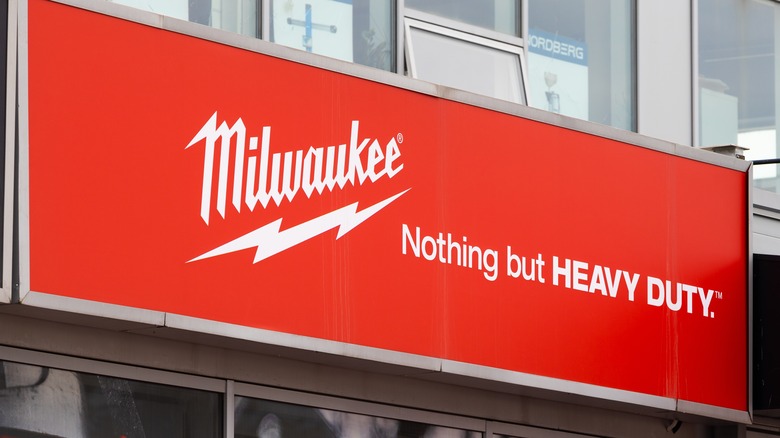A Closer Look At The History Of Milwaukee Tools
Milwaukee is one of the most popular tool brands available, and there's a good chance you've come across the name before while browsing Home Depot due to an exclusivity deal. The brand targets a nice mix of affordability and reliability, making it a fine choice to build a collection with.
2024 represents Milwaukee's 100th anniversary, and a lot of advancements have been made in that century. The manufacturer got its start in Wisconsin, hence the name, but it wasn't always known as Milwaukee. The company was originally known as A.H. Petersen Company — a joint partnership between Albert F. Siebert and A.H. Petersen. In 1923, a fire destroyed the manufacturing facility, and financial turmoil led to the company closing its doors for good. Siebert bought the company's assets at auction and rebranded it as the Milwaukee Electric Tool Corporation. From there, the company went on to develop various power tools such as the electric hammer drill, hole-shooter, and right-angle drill.
Birth to the '50s
Milwaukee became a rapidly growing name upon its rebranding. To start, the company was able to stay in business by repairing tools instead of making them, but that's what eventually led to innovation. Employees analyzed the competitors and sought to make tools that would stand out from the rest. A big part of this was increased durability and a customized motor that increased performance while also prolonging the life of tools. The Milwaukee hole-shooter ended up being a big hit in the automotive and metalworking industry.
The company was permitted by the U.S. government to make its tools Navy-grade, so the product line had an early edge over its rivals. The onset of World War II also required Milwaukee to up its game. The company's hole shooter was an essential tool used to help create aircraft during the duration of the war. The U.S. Navy became a big fan of the brand and began ordering from Milwaukee.
Milwaukee in the '50s to the new millenium
In 1951, Milwaukee created perhaps its most famous tool — the Sawzall. Also known as the reciprocating saw, the Sawzall is a staple of Milwaukee's power tool arsenal to this day, and many other companies have since come out with similar versions. Milwaukee eventually expanded production to other parts of the United States, opening a new manufacturing plant in Mississippi in 1974. In the '70s, Milwaukee became the first American power tool company to create a 4-1/2-inch angle grinder. In 1991, Milwaukee unveiled the Super Sawzall, representing a big upgrade over their previous invention 40 years earlier.
At the start of the 2000s, Milwaukee was known for a variety of tools, but the company admitted it had lost focus on what made it a popular brand in the first place. In 2005, Milwaukee was acquired by Techtronic Industries Co., and the company went back to its roots. This meant more of a focus on electrical, mechanical, and plumbing trades. A big part of doing this was the introduction of the M12 and M18 cordless lines. Simply put, these allowed the consumer to stay on a platform without worrying about being left behind by future tools. The same 18V battery you buy with a power drill works with another M18 product, so you are rewarded for staying in the ecosystem.
2010 to now
Modern-day Milwaukee is largely defined by the REDLITHIUM batteries used in the M12 and M18 lines. Milwaukee sought to create the best performance possible for users, and the goal was arguably completed with cordless options that could rival corded counterparts. Making advancements like that would ultimately lead to more stress on the tool, so Milwaukee has been working on ways to alleviate those concerns. This has been addressed with the M18 Force Logic series, which adds productivity to areas that haven't been addressed in years. Examples of this include the M12 Press Tool, which is lightweight, easy to use one-handed, and has an auto-cycle that ensures a full press each time.
Milwaukee's One-Key system is one of the company's latest innovations. With the world becoming increasingly more digital, it's easier for many people to keep track of things on their phones. The One-Key system lets you keep track of inventory, create custom settings for your tools, and assign tools to specific people if you're lending your collection out. It allows you to ditch the manual pen and paper style and make everything a lot simpler. It's a good tool for work crews, but it can also be beneficial for a simple DIYer just to keep track of things.



